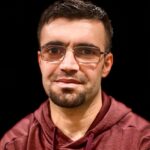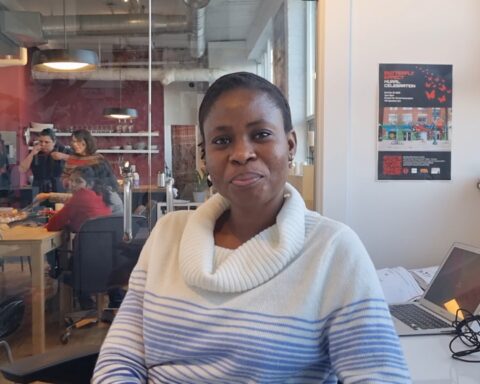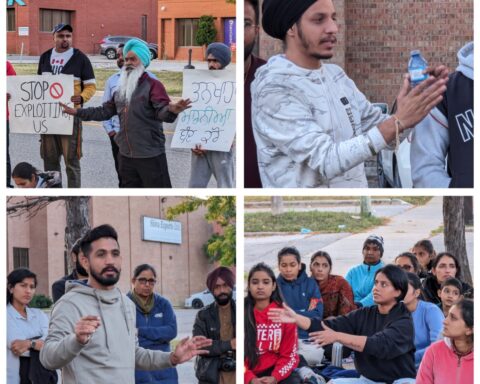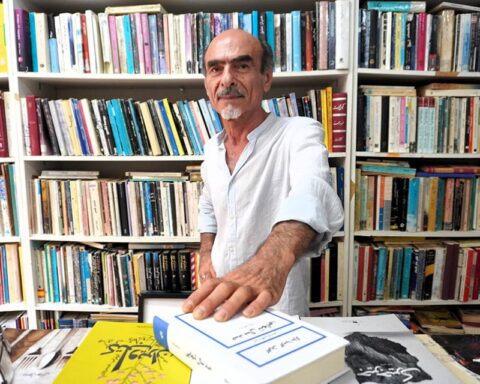A photo gallery highlighting the experiences of immigrant women in British Columbia was on display at the S’eliyemetaxwtexw Art Gallery at the University of Fraser Valley (UFV).
Researchers at UFV received hundreds of submissions of photographs exploring women’s experiences of “belonging and exclusion” as newcomers to Canada.
Of the 400 submissions, 30 gallerists were chosen to display a total of 60 photos, creating a platform for discussion to center these women’s voices, Department of Adult Education at UFV, Professor Tannis Sawkins said.
According to the Premier’s Office of British Columbia, 67,141 international immigrants made B.C. their home accounting for the highest number of migrants in Canada next to Ontario (2021).
Feminist activist and one of the women whose photos were chosen for display Latifa Azad, moved to Canada in 2018 from Afghanistan where she studied law and political science and worked with several NGOs.
But her new life in Canada was different.
“My journey of resettlement was not easy,” Azad told NCM in front of her photo display, sharing mixed feelings of safety, exclusion and the extraordinary challenges to start her life again.
Like many of the gallerists, Azads photos focused on human rights, gender equality, race and justice.
Her photos reflect the difficulties many newcomers, especially women, are familiar with, including “starting life from scratch, taking care of family, finding a job and adjusting to a new place.”
Another of the chosen gallerists, Laila Abdi came to Canada from Somalia five years ago. Her photo highlighted issues with her children, and cultural appropriation, and featured Canada’s red-and-white flag to signify belonging.
“Becoming a citizen was not easy for me,” Abdi said about the difficulties of learning a new language, culture and establishing a routine here. “But the way Canada welcomed me in hospitality made me feel like I belonged,” she said.
“I shared my pictures and story to provide an opportunity for Canadians to know about newcomers better and understand their long journey of resettlement in Canada,” Azad added
Economic disparity of immigrant women
In an annual report on immigration to Parliament in 2018, a gender-based analysis highlighted the economic disparity immigrant women experience in their immigration and settlement in Canada. Women are less likely to be admitted under an economic category, yet overrepresented in the admission categories of caregiving.
In 2017, 48.5 per cent of economic immigrants admitted were women, compared to 51.5 per cent of men. While one in four of all female economic principle applicants immigrated in the caregiver category; men only accounted for one in 100.
Data collected from 2014-2017, showed a significant difference in first-year earnings between men and women.
As tax-filers, immigrant men averaged $56,000 while women earned $32, 000. And as men saw their wages increase within the first three years of their immigration by $12,000 women saw lower growth of $3, 000.
“This follows a long-standing trend which may reflect the historically gendered nature of labour market sectors that attract economic immigrants,” the GBA+ summary said.
“It is our hope that knowledge dissemination such as this can help mainstream Canadians better understand the experience of migration and the societal supports that are needed,” Sakins said.
For Azad, the photo gallery is an opportunity to build a stronger community, to learn, support, include and welcome one another regardless of the differences in language, beliefs and cultures.
— Additional reporting by Kaitlyn Smith
Diary Marif is an Iraqi Kurdish journalist based in Vancouver, Canada. His writing has appeared in the Awene weekly, Livin, and on KNNC TV as a documentary researcher by the name Diary Khalid. Diary earned a master's degree in History from Pune University, in India, in 2013. He moved to Vancouver in 2017, where he has been focusing on nonfiction writing. He can be found on Twitter: @diary_khalid.









